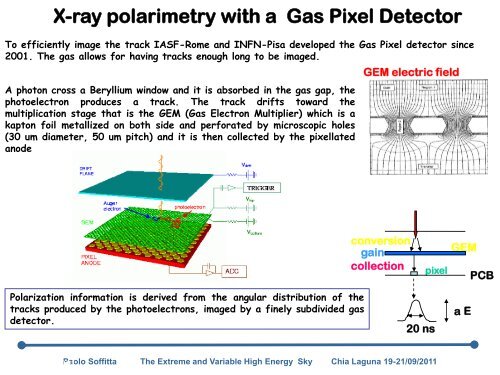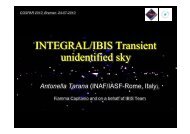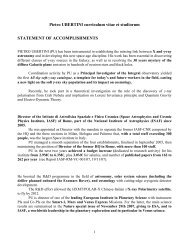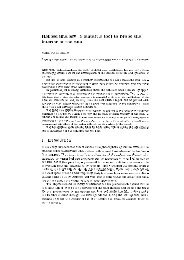X-ray Polarimetry - INAF-IASF-Roma
X-ray Polarimetry - INAF-IASF-Roma
X-ray Polarimetry - INAF-IASF-Roma
You also want an ePaper? Increase the reach of your titles
YUMPU automatically turns print PDFs into web optimized ePapers that Google loves.
X-<strong>ray</strong> polarimetry with a Gas Pixel Detector<br />
To efficiently image the track <strong>IASF</strong>-Rome and INFN-Pisa developed the Gas Pixel detector since<br />
2001. The gas allows for having tracks enough long to be imaged.<br />
The principle of detection<br />
A photon cross a Beryllium window and it is absorbed in the gas gap, the<br />
photoelectron produces a track. The track drifts toward the<br />
multiplication stage that is the GEM (Gas Electron Multiplier) which is a<br />
kapton foil metallized on both side and perforated by microscopic holes<br />
(30 um diameter, 50 um pitch) and it is then collected by the pixellated<br />
anode plane.<br />
GEM electric field<br />
X photon (E)<br />
conversion<br />
gain<br />
collection<br />
pixel<br />
GEM<br />
PCB<br />
Polarization information is derived from the angular distribution of the<br />
tracks produced by the photoelectrons, imaged by a finely subdivided gas<br />
detector.<br />
20 ns<br />
a E<br />
Costa et al., 2001<br />
Paolo Soffitta The Extreme and Variable High Energy Sky Chia Laguna 19-21/09/2011






